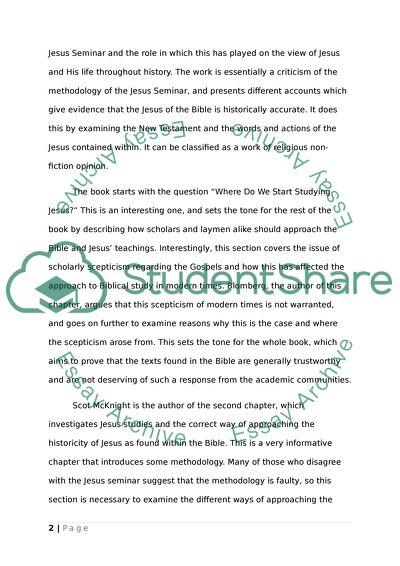Cite this document
(“Book Review of Jesus Under Fire Essay Example | Topics and Well Written Essays - 1750 words”, n.d.)
Retrieved from https://studentshare.org/religion-and-theology/1448341-book-review-of-jesus-under-fire
Retrieved from https://studentshare.org/religion-and-theology/1448341-book-review-of-jesus-under-fire
(Book Review of Jesus Under Fire Essay Example | Topics and Well Written Essays - 1750 Words)
https://studentshare.org/religion-and-theology/1448341-book-review-of-jesus-under-fire.
https://studentshare.org/religion-and-theology/1448341-book-review-of-jesus-under-fire.
“Book Review of Jesus Under Fire Essay Example | Topics and Well Written Essays - 1750 Words”, n.d. https://studentshare.org/religion-and-theology/1448341-book-review-of-jesus-under-fire.


